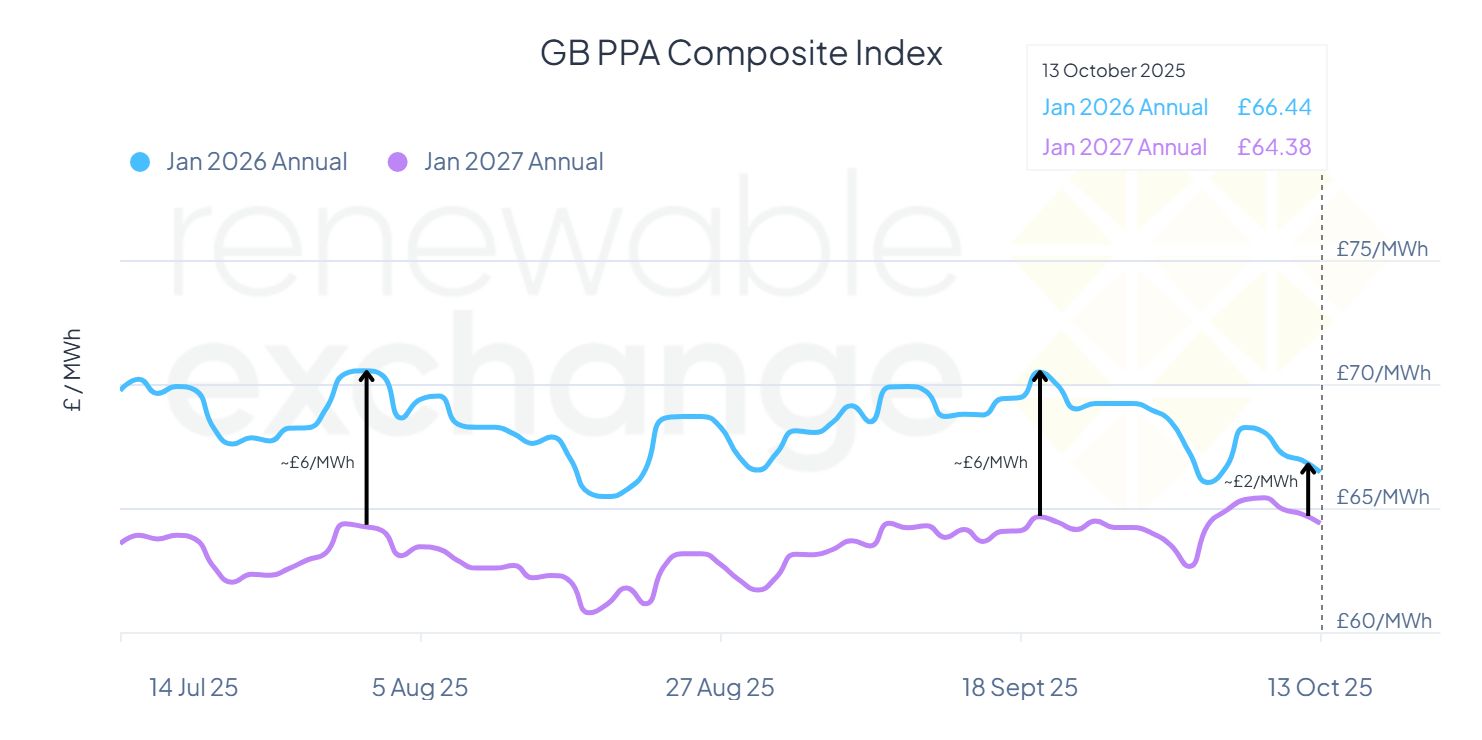In the dynamic world of energy markets, timing is everything. A subtle shift in the forward curve can present a significant strategic opportunity for renewable generators. Right now, we're seeing one such shift in the winter power prices for 2026 and 2027, and it’s a signal that generators should be paying close attention to.
The gap between the price for January 2026 delivery and January 2027 delivery has narrowed dramatically, creating a compelling case for locking in longer-term Power Purchase Agreements (PPAs).
Just a few weeks ago in September, the market showed a clear downward slope between the next two winters. The power price for January 2026 was trading at a premium of around £6/MWh over the price for January 2027.
This is a fairly typical market structure. The further out you look, the more uncertainty and risk are priced in, often leading to lower prices for later delivery periods. For a generator considering a PPA, this £6/MWh discount for the second year would lower the average price of a 2-year deal compared to a 1-year deal, making the shorter term more attractive on a purely per-MWh basis.
Fast forward to today, and the picture has changed remarkably. That £6/MWh gap has collapsed. The spread between January 2026 and January 2027 is now only around £2/MWh.
The price for the second winter has risen, almost converging with the first. The "penalty" for locking in that second year has almost evaporated.

This price convergence creates a powerful incentive for generators to fix their revenue for longer.
The forward curve is telling a clear story. The near-parity between the January 2026 and January 2027 power prices has created an opportune moment for renewable asset owners.
If you've been weighing your options, now is the ideal time to run a tender on the Renewable Exchange platform and explore 2-year PPA contracts. This allows you to lock in excellent value and de-risk your project's revenue for a longer term.
Don't wait for this window of opportunity to close. Get in touch with our team or log in to your account to see what we are forecasting for a 2-year PPA today.
If you are not currently on the Renewable Exchange platform, register your renewable asset here to get your free, site-specific forecast.